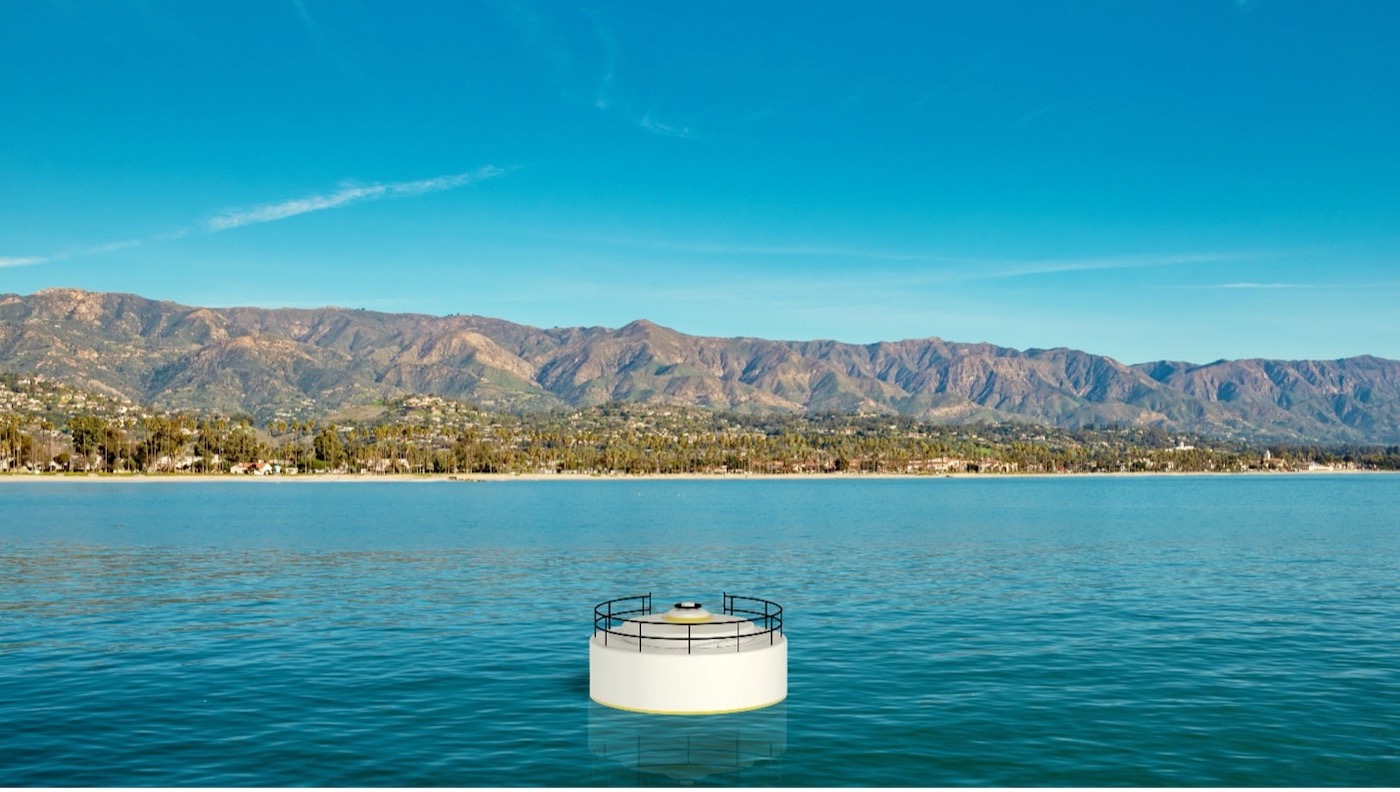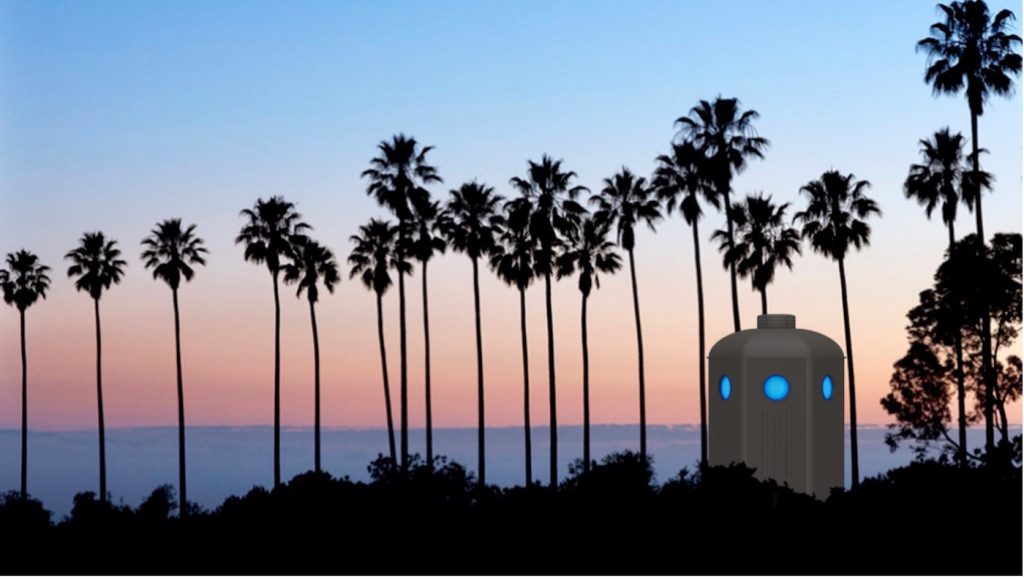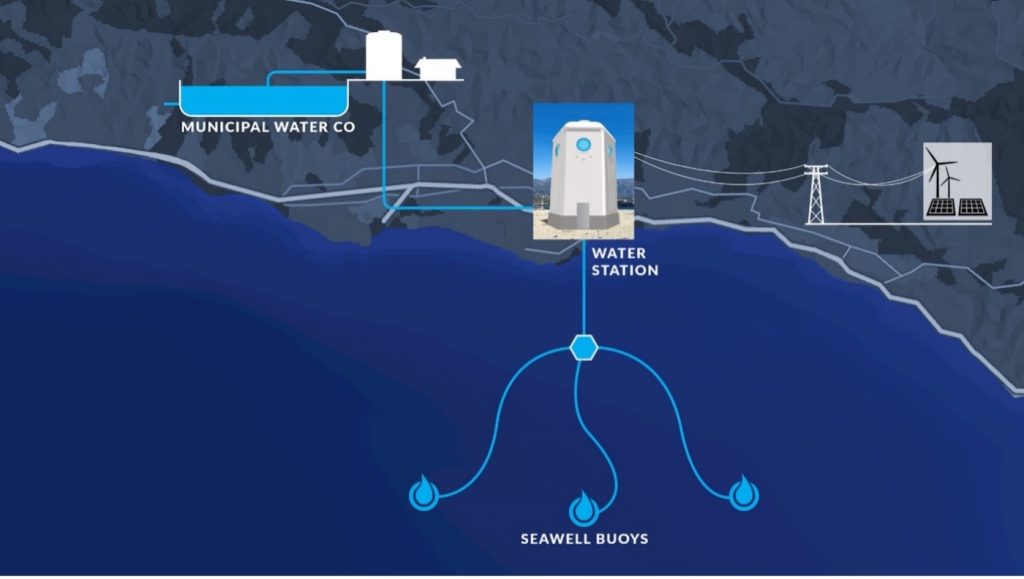Is There an Ocean Miracle in California’s Future?

Coming off another summer of soaring dry heat, California water agencies can no longer rely on snowpack in the High Sierras, delivered through an aging and over-extended State Water System, nor can they rely on an over-drafted Colorado River. So, what’s left beside the pitiful plea of “Pray for more rain”?
The Pacific Ocean Reservoir
What’s left is the giant natural reservoir known as the Pacific Ocean that covers more than 30% of the Earth’s surface. It is the largest water reservoir on the planet. Built for free by nature, it sits right on our front doorstep, covering more than 60 million square miles at an average depth of 14,040 feet. Rain or shine, the water in the Pacific Rim, minus its salt, represents an inexhaustible potential supply of potable water.
The Innovative SeaWell Santa Barbara as a Drought-buster
Not since Charlton Heston posed as Moses in The Ten Commandments and parted the Red Sea, has this nation needed a similar miracle to deliver the people of California (and the Western United States) from the worst mega drought in California in the last 1,200 years. The solution may lie in the floating desalination system from Santa Barbara-based SeaWell, LLC.
A cadre of credible scientists and engineers at SeaWell have come up with a solution to the world’s drought dilemma that is both environmentally friendly and cost competitive. Instead of building a massive land-based desalination plant with a crushing environmental footprint, SeaWell, LLC, has engineered a smaller, patented saltwater desalination plant, contained within a SeaWell Buoy, positioned about a mile offshore in the Pacific Ocean at a depth of roughly 75-feet deep.
Each SeaWell Buoy is designed to be its own self-contained, desalination plant, capable of producing 950 acre-feet per year (AFY) of potable, reclaimed seawater, delivered to the shoreline at a cost per acre-foot that is significantly less than the current $3,500 per AF that the City of Santa Barbara charges Montecito for desalinated water.
Measuring 15 feet in diameter, each SeaWell Buoy would protrude some six feet above the ocean surface and descend some 40 feet below the surface. It would contain an unmanned, fully operational, state-of-the-art, reverse osmosis desalination plant with an environmentally friendly intake system and brine discharge.
The SeaWell Buoy, built to withstand heavy ocean currents and storms, is planned to be assembled and tested in the United States, and distributed where needed along the nation’s coasts. Buoys could be added incrementally as more pure water is needed. For example, three SeaWell Buoys could replace nearly 100% of Montecito’s promised State Water allocation of 3,300 AFY, enabling MWD to lease its annual State Water allocation to inland communities or agricultural users.
SeaWell Buoy desalinated water would be delivered ashore from a SeaWell Buoy to a SeaWell Water Station through a new or existing seabed freshwater pipeline. The Water Station, located on a 1/4-acre shoreline site, could service multiple SeaWell Buoys. Initially SeaWell plans to utilize an existing operational solar microgrid to power its first California installation. The company plans to use renewable energy for its future projects.
Fresh potable water from the Buoy could be used immediately; or injected into underground water basins for future use, thus allowing any surplus water to be leased to thirsty farm communities to recharge their wells, irrigate fields, and prevent soil collapses. Local water agencies along the coast could enjoy a new revenue stream from inland water sales to offset any new SeaWell costs.

Environmental Sustainability
Environmentalists should applaud the SeaWell Buoy concept. Here are the advantages that the SeaWell, LLC system offers compared to other solutions:
Smaller Environmental Footprint
SeaWell desalination Buoys are not affected by a sea water rise or a climate change. Compared to the environmental footprint of a new $1 billion reservoir, or a new advanced recycled water plant, or a new onshore desalination plant, the SeaWell Buoy footprint is insignificant.
Lower Energy Use
The major complaint against seawater desalination has been the cost of energy to push seawater through RO membranes to remove brine from seawater. The average electrical rate in California in June 2022 was 29 cents per kilowatt hour (kWh), up 25% over the previous year, compared with 14 cents per kWh in Florida and 13 cents per kWh in Texas. In Israel, desalination energy costs are 16 cents per kWh. California’s hefty energy rates raise desalination costs significantly, making energy efficiency a high priority for SeaWell.
SeaWell Buoys bring ashore only desalinated water, which is only half the volume that must be brought ashore for conventional land-based plants. Land-based desal plants need two gallons of seawater to produce one gallon of desalinated water.
Less Marine Life Impingement or Entrapment
Low-velocity inflow screens avoid impingement or entrapment of sea life. The SeaWell Buoy is designed to emulate percolating water through a sandy beach using low intake velocities to avoid harming sea creatures.
Improved Brine Disposal
A novel rotating dispersal of residual brine on the SeaWell Buoy assures a quick dilution to ambient salinity well above the seafloor.
Easier System Maintenance and Repair
Suppose the Buoys or their conveyance pipes break or spill? Not to worry. Safe, potable water is spilled into the Pacific Ocean. How about a Buoy maintenance malfunction? Tow in a new Buoy and tow out the old one for repair.
Restore Natural Habitats
SeaWell Buoys have the potential to assist in the restoration of wetlands, recharge depleted water basins, assist in the protection of endangered species, and help prevent seawater intrusion into vulnerable coastal aquifers.
Is the SeaWell Approach Credible?

SeaWell technology development started in 2018, led by Jim Dehlsen, a pioneer in U.S. wind and marine renewable energy industries. Dehlsen is known as “the father of the U.S. wind power industry” for his seminal work in wind turbine design and power. Working closely with the National Renewable Energy Lab (NREL), Dehlsen developed a variable-speed turbine to reduce wind energy costs. He sold that company, Zond Systems, to Enron, which formed Enron Wind. In 2002, General Electric acquired Enron Wind to form GE Wind, General Electric’s entry into the wind power industry.
In 2001, Dehlsen formed Clipper Windpower in partnership with the U.S. Department of Energy and NREL to develop the Liberty Wind Turbine, featuring advanced drive train and controls. In December 2010, Dehlsen sold Clipper Windpower to United Technologies Corporation (UTC), which in 2020 merged with Raytheon Corporation to form Raytheon Technologies.
Dehlsen describes SeaWell’s approach to desalination, noting, “As with wind turbines, SeaWell is based on modular, assembly-line-built systems, designed for water affordability and to be a benign presence in the ocean that can be quickly put into operation.”
Obviously, what SeaWell needs now is a working pilot program to build and demonstrate the SeaWell system, in partnership with a thirsty customer. It would be even better if that partner had the clout to fast-track permitting through the punishing labyrinth of the state water approval process.
Pilot Project with Vandenberg Space Force Base
Vandenberg Space Force Base in Santa Barbara County needs roughly three million gallons of fresh water a day for missile launch cooling and human consumption for its 10,000 workers on-base, plus another 2,600 military dependents. Today, it relies on the unreliable State Water Project and on-site wells.
Of the 102 military bases identified as “at risk for water scarcity” by the Government Accountability Office (GAO) in 2020, Vandenberg was the only base that failed in all six water assessment categories.
“We are pleased that SeaWell has prioritized Vandenberg for this project. Water is essential for mission-critical and support activities, and reliability of this new water supply has the potential to substantially backstop our current drought-prone sources,” said Ken Domako, Vandenberg’s Chief of Portfolio Optimization.
The Vandenberg SeaWell project would be located offshore of the Base’s original Space Launch Complex, which dates back to the 1950s and is now inactive. Proximity to the shoreline makes it ideal to accommodate a SeaWell Water Station, which would be connected to Vandenberg’s 20-megawatt solar energy microgrid. The SeaWell system would ensure a dependable supply of water, which is critical to the launch process and the Space Force Base security concerns.
Vandenberg is working with a SeaWell subsidiary, Ocean Portal Water Company of California, which develops tailored water supply projects using SeaWell Buoys, coordinated with customer needs, for project delivery. Ocean Portal’s mission is to provide water to military, municipal, or water districts seeking a long-term supply contract as a reliable backup to State Water and over-drafted groundwater basins.
Funding for SeaWell, LLC
SeaWell is seeking some $6.5 million in private equity funding, paired with Department of Defense grants, for the engineering and permitting of the Vandenberg “Ocean Portal One Project.” A second project in Santa Barbara County is nearing finalization. As SeaWell and California water agencies are well aware, “The drought waits for no one.”
It was President John F. Kennedy, who noted in 1962, “If we could produce fresh water from salt water at a low cost, that would indeed be a great service to humanity, and could dwarf any other scientific accomplishment.”





